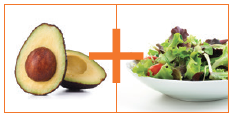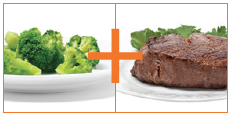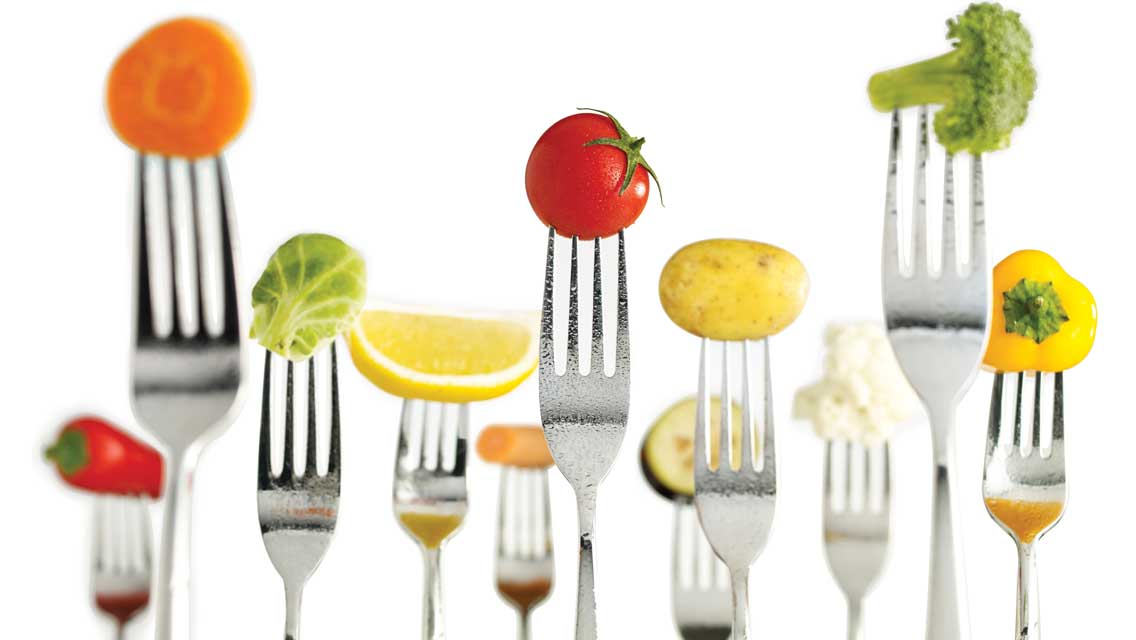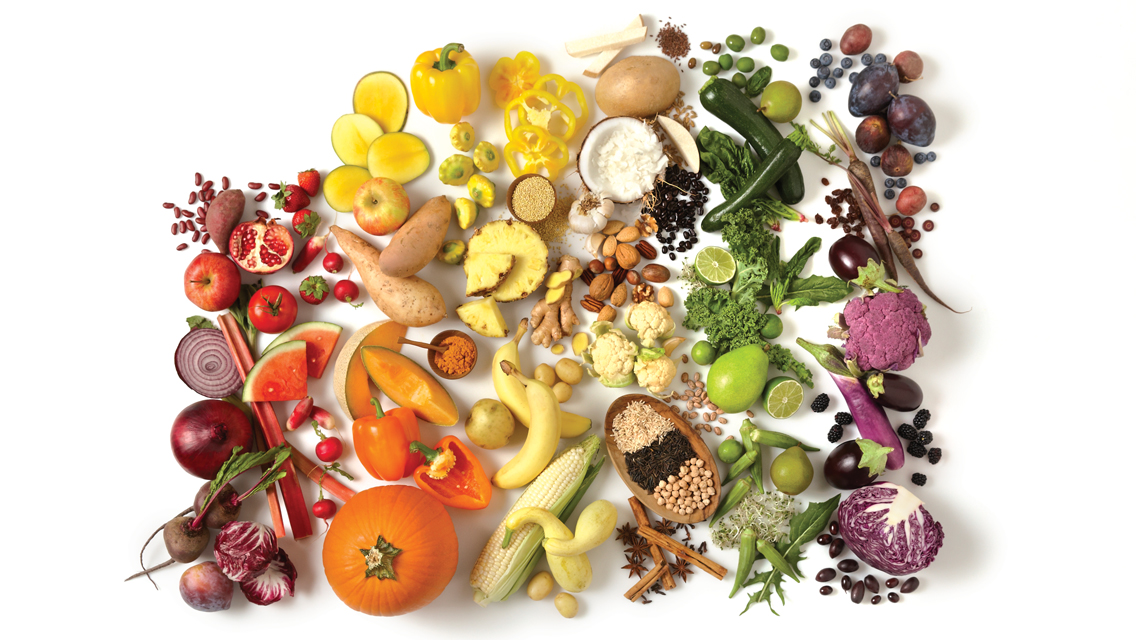I’m a health-conscious person who loves to eat, so I sometimes chase nutrients with a knife and fork the way I chased fireflies with a net and Mason jar as a child. My kitchen is stocked with almond milk fortified with calcium and vitamin D, pomegranate juice enriched with antioxidants, and an embarrassing number of supplements.
Did I mention I am perfectly healthy?
I’m not alone in my nutrient fixation. In 2014, Americans spent an estimated $88 billion on dietary supplements, fortified foods, and functional foods and beverages, according to the Nutrition Business Journal.
All of which invites the question: What exactly are we getting in return for our investment?
The answer? Probably not as much as we think. Nutrition scientists have spent years mapping what these misappropriated nutrients do for the body. And the news isn’t good.
Distilling whole foods into a grab bag of single nutrients and then pumping them one by one back into the body is naive, says Kevin Spelman, PhD, an adjunct professor at the National College of Natural Medicine in Portland, Ore., and a food-industry consultant specializing in plant chemistry and its biological effects.
“The body’s biology is an ecosystem. Throw in too much of one thing and you’ll disrupt the system in ways you couldn’t have predicted.”
The “Fortified” Factor
For a naive concept, the single-nutrient solution certainly has legs. For more than a century, scientists have separated nutrients from whole foods, concentrated them, and injected them back into processed ones. Look no further than the United States’ food-fortification programs. The federal government has long manipulated the nation’s food supply in the name of public health.
And the programs have succeeded on many fronts. Shortly after the government added iodine to salt in 1924, the rate of iodine deficiency in the general population fell from 38 to 9 percent.
The next target was grains. In the years since, iron, riboflavin, thiamin, niacin, and, most recently, folate have been added to refined wheat, rice, and corn.
Populations at risk for severe deficiencies, such as the elderly, the young, and the poor, benefit the most from fortified foods.
The benefits are far less clear for healthy, affluent adults — those who are most likely to drop six bucks, for instance, on a beverage fortified with Hawaiian gold turmeric.
The Beauty of Whole Foods
So, what is a health-conscious consumer supposed to think of vitamin-enhanced water or energy bars infused with green-tea extract? Nutrients that pop up in functional drinks, foods, and even supplements are rarely as healthy as whole foods, says Marion Nestle, PhD, professor of nutrition and food studies at New York University and author of What to Eat.
“No single nutrient is likely to work as well as a diet rich in the fruits and vegetables from which that nutrient was isolated,” she explains.
A classic example is white versus whole-wheat flour. When a whole grain is refined into white flour, up to 90 percent of its nutrients are lost. The government requires manufacturers to add five nutrients to the flour, but what about the rest?
Missing in action are fiber, magnesium, vitamins E and B6, copper, zinc, and more than 100 phytochemicals — vital disease-preventing plant chemicals. (For more on phytonutrients, see “Full-Spectrum Eating“.) And those are just the nutrients scientists have cataloged.
Whole foods also have a complex array of benefits that scientists are only beginning to understand.
Take avocados. They’ve long been considered an excellent source of healthy monounsaturated fat. But their status as a health food got a big boost when a small study published in the January 2015 issue of the Journal of the American Heart Association suggested that eating an avocado every day may lower bad cholesterol levels in overweight and obese adults.
Overnight, the fruit became a multidimensional nutritional powerhouse as scientists gushed about its high levels of vitamins, minerals, phytosterols (plant compounds that reduce cholesterol absorption in the body), and polyphenols (plant-based antioxidants).
“The great thing about this study is it showed us just how little we really know about avocados,” says Deanna Minich, PhD, FACN, CNS, a nutritionist and author of The Complete Handbook of Quantum Healing: An A–Z Self-Healing Guide for Over 100 Common Ailments. “The tendency is to reduce a whole food to a single star nutrient. But this study is the perfect reminder to step back and appreciate the beauty and complexity of whole foods in their entirety.”
(For creative and unusual ways to prepare and eat avocados, see “Amazing Avocados: 6 Creative Recipes, Techniques, and More.”)
Win Some, Lose Some
Breaking whole food into parts means something must be sacrificed. But that’s not always a bad thing.
For instance, taking fish oil out of a fish and putting it into a capsule doesn’t tarnish the health profile of the omega-3s in the oil. Studies suggest that fish-oil supplements protect the heart just as well as eating fish. And thanks to distillation and filtration processes in manufacturing, fish-oil supplements are less likely than fish to contain toxins like mercury, dioxin, and PCBs, all of which pose a health concern, especially for children and pregnant women.
In other cases, however, the substitution has been less than successful.
Antioxidants are among the most plentiful classes of phytochemicals in fruits and vegetables. In a scientific review from the European Journal of Cancer Prevention, 128 out of 156 studies showed that a diet rich in fruits and vegetables had a “significant protective effect” against cancer. But antioxidant supplements have yet to deliver. And, in some cases, they can be harmful.
The case of beta-carotene is the most notorious example of an antioxidant supplement gone wrong. Back in the 1980s, observational studies hinted that the more beta-carotene–laden fruits and vegetables people ate, the less likely they were to suffer from heart disease and certain cancers. So researchers designed two large, double-blind, placebo-controlled studies to test whether supplemental beta-carotene could convey the same punch.
The result made scientific headlines — and not in a good way. For those swallowing beta-carotene pills, the odds of a cancer diagnosis went up instead of down. Supplemental beta-carotene is a prime example of an antioxidant that can damage a person’s genetic network, says Spelman.
Supplemental fiber, too, has certain limitations.
We know that people who eat lots of fiber-rich whole foods have lower rates of colon cancer. However, in studies, fiber supplements alone have not been shown to provide the same protection against that disease.
“That does not mean that fiber supplements have no value,” notes Minich. Fiber in any form still helps with detoxification and moving things along digestively, all of which supports good health. (For more on that, see “Fiber: Why It Matters More Than You Think“.)
With a fiber supplement, you can’t count on getting the same rich array of anti-inflammatory and protective phytonutrients you’d find in whole foods. Still, she says, for those who struggle to get a baseline dose of 25 to 38 grams of fiber from food, taking fiber supplements derived from whole foods and featuring a matrix of micronutrients (rather than just psyllium) can make a real difference.
The Food-Gene Connection
Nutrients in whole foods tell the body what genes to turn on and what genes to turn off. A single nutrient can flip on a single gene, like plucking a single string on a guitar. But genes don’t work in isolation; they work in clusters. Whole foods contain all the nutrients needed to activate the entire cluster.
“There is a web relationship between genes,” says Spelman. “You need to strum the whole genome to get a biologically appropriate response.”
Lots of studies show that foods rich in vitamin E can lower the risk of diabetes, says Spelman. But taking vitamin E supplements in hopes of triggering the same response doesn’t work because you’re lacking the other whole-food nutrients needed to activate that cluster of genes and trigger the proper response in the body.
He makes the case that whole foods and the human genome evolved in tandem over millions of years. “There is an evolutionary precedent that the nutrients we take in are wrapped up with the compounds needed to activate the network,” says Spelman. “The idea that one nutrient is going to change physiology is overly simplistic.”
Whole foods also support healthy weight management. Because the fiber is stripped out of most refined grains, they aren’t as filling as the real deal, says Joan Salge Blake, RD, LDN, clinical associate professor of nutrition at Boston University and author of Nutrition & You. “Switching to whole grains such as millet and whole-kernel bread will add more fiber to your diet, helping you feel more satisfied with smaller portions, so you’ll eat fewer calories.”
Ultimately, the human body just isn’t designed for a lifetime of dining on processed foods, particularly when they are chock-full of refined starches and sugars. Make “health” foods like that the centerpiece of your diet, and your blood-sugar levels will be on a nonstop roller-coaster ride.
Eventually, your exhausted pancreas could burn out and your body could succumb to metabolic syndrome, obesity, and type 2 diabetes. “That’s a high price to pay for the supposed benefits of processed foods,” says Spelman.
Still, nutritional supplements and fortified foods have their place. People at risk of malnutrition, either from a lack of access to whole foods or from a health condition that limits nutrient absorption, can benefit from these products. For everyone else, most experts recommend a case-by-case approach.
For instance, people who don’t eat fish may benefit mightily from fish-oil and other essential-fatty-acid supplements. And with vitamin D deficiencies affecting an estimated 1 billion people globally, vitamin D3 supplements or D-fortified foods are a good idea for most everyone, especially in winter months when our exposure to sunlight is reduced.
Supplemental folic acid (important in protecting against certain birth defects and added to many fortified foods) is essential for women who are pregnant or trying to get pregnant.
Overall, though, it’s best to view supplements and fortified foods as additions to, not replacements for, whole foods. “Nutrient-spiked foods are certainly not all bad,” concludes Minich. “But the closer you can get to food as nature intended, the better.”
So Happy Together
Nutrient-obsessed people won’t benefit from whittling food choices down to just blueberries and salmon. To gain the most bang from your whole-foods buck, build in variety and take advantage of whole-food synergies: Some whole foods partner to help the body absorb nutrients better than if you’d eaten them solo.
A classic example of food synergy is tomato sauce and olive oil. Tomatoes are rich in lycopene, a powerful phytochemical, but the body needs fat to absorb it. So take a page from Italian Cooking 101 and make your favorite tomato sauce using olive oil as your healthy fat.
Here are a few other pairings to keep in mind:
Green Tea + Lemon
Ascorbic acid in citrus fruits like lemons helps the body better absorb the antioxidant catechin found in green tea.

Avocado + Mixed Greens
The good fat in avocados helps the body absorb phytochemicals from leafy greens.

Broccoli + Steak
Vitamin C in broccoli helps the body absorb the heme iron found in meat.

Spinach + Tofu
The vitamin K in spinach helps the body absorb the calcium in tofu.

Raisins + Dark Chocolate
The boron in raisins helps the body absorb more magnesium from chocolate.





This Post Has 0 Comments